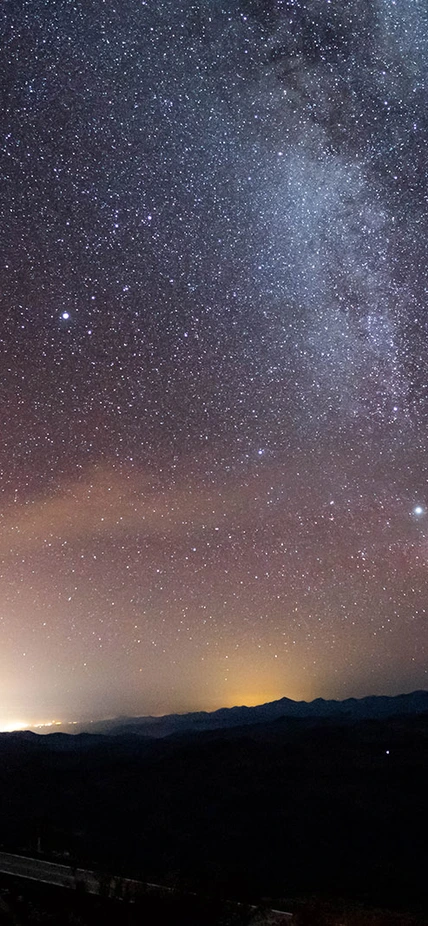Fifty years ago, when the first international observatories were installed in Chile, light pollution seemed unthinkable due to the low population density and small size of villages and mining sites in the Atacama Desert. A few decades later, Chile’s economic growth has brought it to the brink of becoming a developed country. This is great for our operations at Las Campanas Observatory (LCO) because of improved communications, energy, and transportation infrastructure, as well as a better prepared local workforce. But with this development comes the threat of light pollution.
While 50 years ago the main astronomical sites in Chile all had virgin skies, the luminous haloes of growing cities, highways, and mining sites, are starting to have an impact on the sky's brightness. Currently the Las Campanas sky towards the zenith (that’s looking straight up) is two percent brighter than natural levels. According to simulations based on nighttime satellite imagery, half of this artificial brightness comes from a single source near the observatory: the new lighting system of the Pan-American Highway between La Serena and Vallenar.
Don’t get me wrong! LCO is still one of the darkest and best sites on the planet for astronomy, but the evolution of light pollution, and the fact that single large projects can have a measurable effect is a bit worrisome and must be addressed. Imagine you are hiking a trail in Yosemite and you find a plastic bag with trash. That doesn’t make Yosemite a polluted park, but a place where action should taken to prevent littering to preserve its beauty. That is exactly what a team of Carnegie astronomers with representatives from other U.S. and European observatories in Chile are doing: raising awareness in the communities and helping the Chilean government in preservation efforts to allow us to have dark skies above the Atacama Desert for generations to come.
The Carnegie Observatories in a collaboration with the European Southern Observatory (ESO), the Association of Universities for Research in Astronomy (AURA), the Giant Magellan Telescope Organization (GMTO), and the Chilean Government, fund and run the Office for the Protection of the Dark Skies of Chile (OPCC for its acronym in Spanish). Via the OPCC, we have helped Chile to be in the forefront of light pollution regulation and dark skies preservation. Since 1998, Chile has one of the world’s most stringent regulations controlling outdoor lighting in regions of astronomical interest. In 2014, these regulations were updated to properly address the use of new technologies like LED lighting. The OPCC also runs education and public outreach projects to raise awareness about light pollution and sustainable illumination practices, and organizes scientific workshops bringing together expertise on light pollution across different areas such as astronomy, medicine, biology, energy efficiency, public policy, etc.
Chilean authorities can advance the protection of these natural laboratories, which are unique in the world. This requires an increase in the levels of compliance with current light pollution regulations and promoting new initiatives, such as the declaration of protected areas in the lands that surround astronomical observatories. It is also essential to establish a requirement to address light pollution in the environmental impact assessments, which are required for the approval of large construction and infrastructure projects like the Pan-American Highway.
Last October, Carnegie astronomers and our OPCC partners met with the Chilean Minister of the Environment, Carolina Schmidt, in Cerro Paranal. LCO Director, Leopoldo Infante, and myself had the opportunity to talk personally with Minister Schmidt and present the need for Chile to protect the scientific, cultural, and environmental heritage that the dark skies of the Atacama Desert represent. This was just the latest in a series of activities and initiatives involving Carnegie astronomers in Chile, aimed at advocating for the protection of these magical and valuable sites. Protecting the skies above astronomical observatories will ensure that humanity can continue discovering and understanding the universe for generations to come. We were pleased that the minister stated a strong commitment to help us move forward on these issues. In the meantime, we will remain active and vigilant in the protection of our starry nights.
Guillermo A. Blanc
Staff Associate Astronomer
Carnegie Observatories
